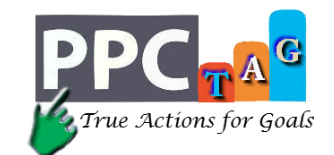Creating an effective campaign ad structure for personal injury lawyers involves organizing your campaigns, ad groups, and keywords in a way that aligns with your goals and maximizes relevance. Here’s a step-by-step guide to help you create the best campaign ad structure for personal injury lawyers using keywords:
- Understand Your Goals: Clearly define your advertising goals. For example, if your objective is to generate leads for specific types of personal injury cases like car accidents or medical malpractice, focus your ad structure accordingly.
- Identify Key Practice Areas: Determine the main practice areas within personal injury law that you want to target. This could include car accidents, workplace injuries, medical malpractice, slip and fall incidents, etc.
- Campaign Structure: Create separate campaigns for each practice area to ensure a targeted approach. This allows you to allocate budget, set specific settings, and monitor performance for each area individually.
- Ad Group Structure: Within each campaign, create ad groups that correspond to specific types of cases or keywords related to the practice area. For example, within the “Car Accidents” campaign, you could have ad groups for “Rear-end Collisions,” “DUI Accidents,” or “Pedestrian Accidents.”
- Keyword Research: Conduct thorough keyword research for each ad group to identify relevant keywords that potential clients might use when searching for personal injury lawyers. Include variations, long-tail keywords, and location-specific terms. Use keyword research tools like Google Keyword Planner, SEMrush, or Moz to identify high-volume and relevant keywords.
- Match Types: Choose the appropriate match types for your keywords. Broad match may capture a wider range of search queries, while modified broad, phrase match, or exact match can help refine the relevance of your ads. Test different match types to find the right balance between reach and precision.
- Ad Copy: Create compelling ad copy that aligns with the specific practice area and target keywords. Customize your ad copy to address the pain points, benefits, and unique selling propositions related to each practice area.
- Landing Page Relevance: Ensure that your landing pages are highly relevant to the keywords and ad copy used in your campaigns. Optimize landing pages to provide specific information related to the practice area or type of case, including testimonials, case results, and a clear call-to-action.
- Ad Extensions: Utilize ad extensions to enhance your ads and provide additional information to potential clients. Consider using call extensions, location extensions, sitelink extensions, or callout extensions to highlight specific aspects of your services and increase ad visibility.
- Regular Monitoring and Optimization: Continuously monitor the performance of your campaigns, ad groups, and keywords. Make data-driven decisions to optimize your ad structure, adjust bids, pause underperforming keywords, and refine your targeting to maximize results.
Remember to regularly analyze campaign metrics such as click-through rates (CTRs), conversion rates, cost-per-conversion, and return on investment (ROI) to make informed adjustments and continuously improve your ad structure for optimal performance.
